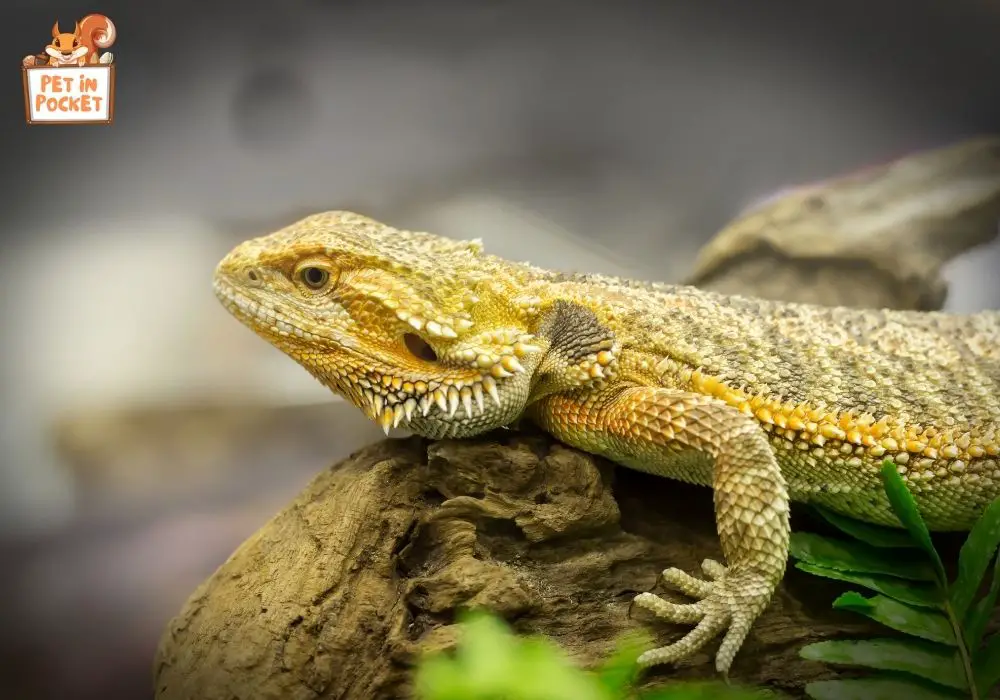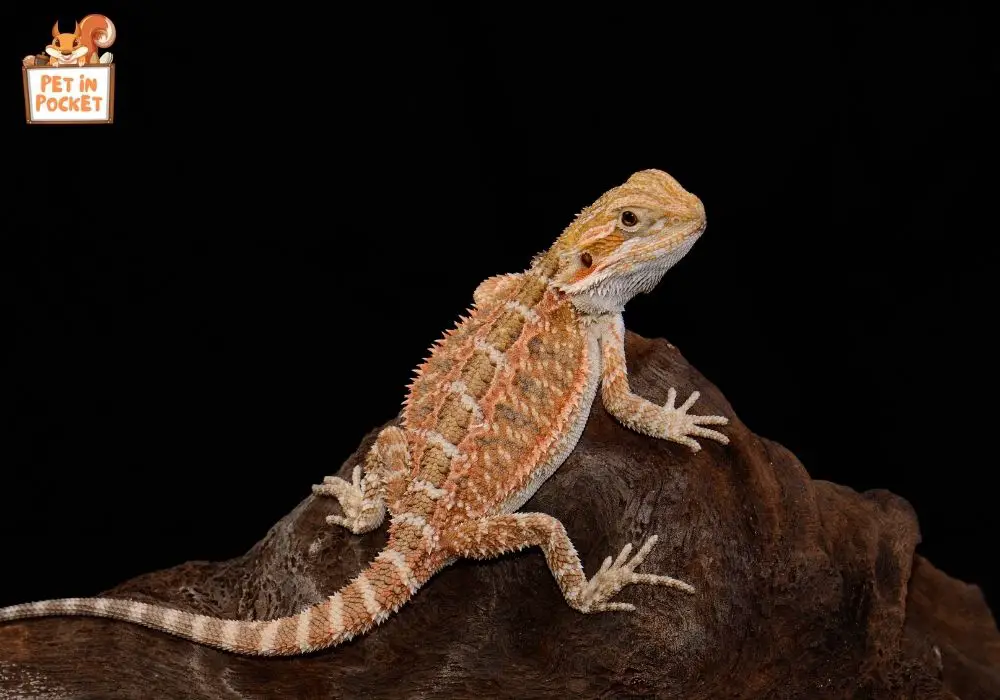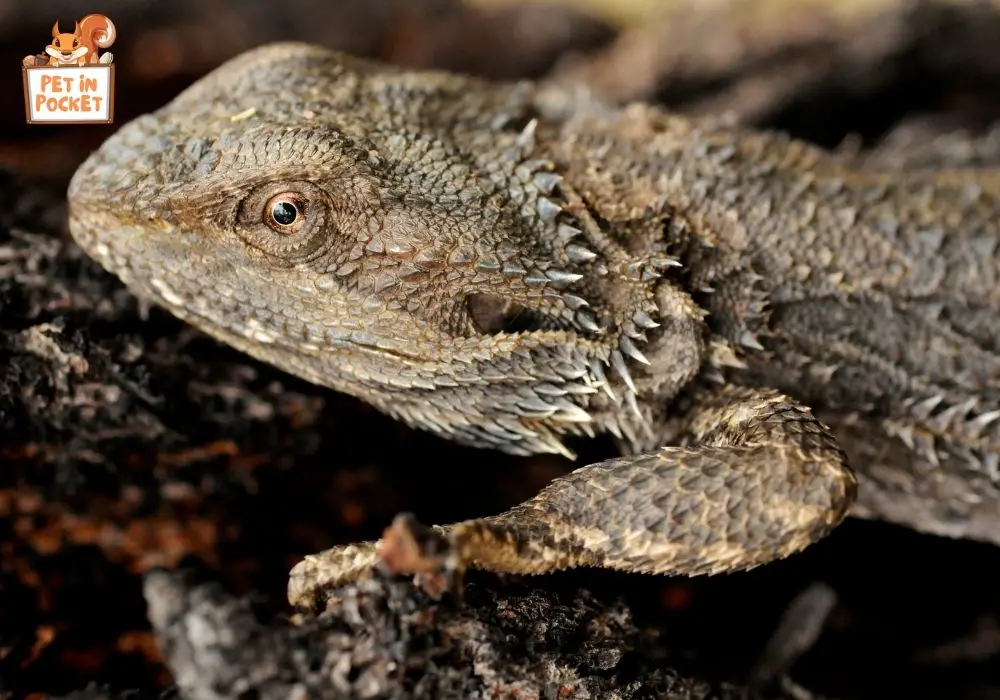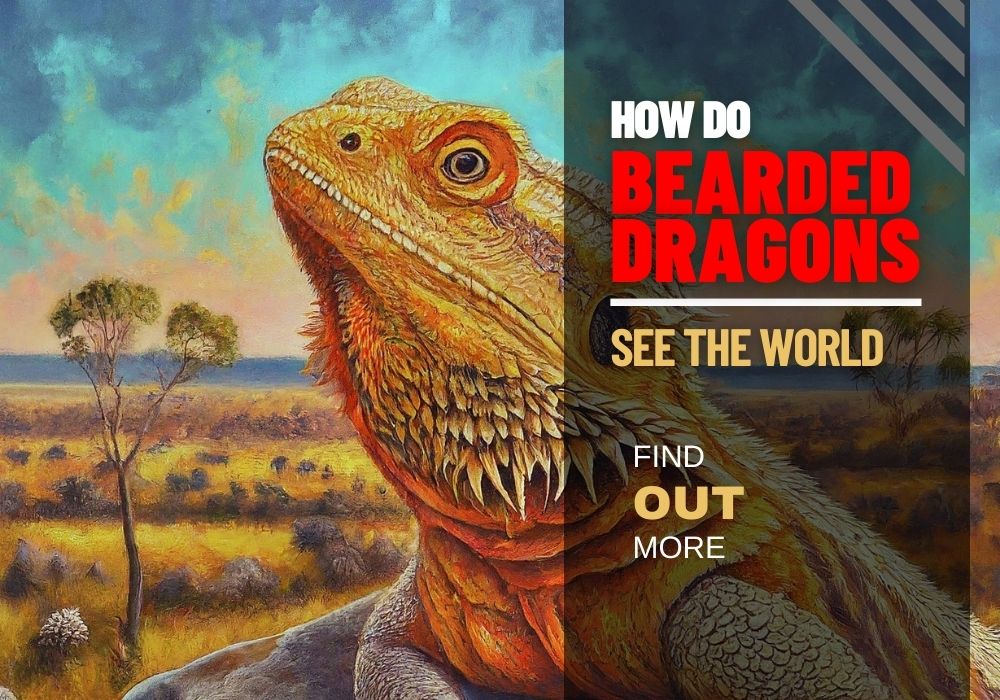Bearded dragons see the surroundings in a different way than other animals as their eyes are located two sides of their head. Bearded dragons are known for their unique appearance and captivating personalities. Because of their unique appearance they have become popular pets among reptile lovers. One of the intriguing aspects of these reptiles is their vision, which plays an important role in their overall health and well-being.Here, we will unravel the mystery of how do bearded dragons see the world, exploring their excellent vision, the structure of their eyes, and the impact of light conditions on their visual perception.
Table of Contents
Unravelling the Mystery of Bearded Dragon Vision

As a bearded dragon owner it is important for us to understand how bearded dragons perceive their surroundings. It will help to provide them a proper environment to live in. These reptiles exhibit excellent vision, which enables them to navigate their surroundings and interact with their environment effectively. Let’s take a closer look at the anatomy of their eyes, the unique structure that contributes to their visual acuity, and the presence of a third eye, known as the parietal eye, on the top of their head.
Bearded Dragon Eye Anatomy: A Closer Look
The eyes of bearded dragons are on the sides of their head and allow them to have a wide field of vision. This positioning enables them to see potential predators, prey, and their surroundings more effectively. In addition to their main eyes, bearded dragons possess a third eye that is known as the parietal eye which is located on the top of their head. Though not capable of providing detailed vision, the parietal eye plays an important role in regulating their biological clock, aiding their overall health and biological functions.
Bearded dragons also have binocular vision, meaning their eyes work together to provide depth perception. This depth perception enhances their ability to gauge distances and spatial relationships, allowing them to accurately judge the position of prey or potential threats. Their visual acuity is another remarkable feature, enabling them to perceive a wide range of colors. This visual acuity contributes to their ability to appreciate the hues and spectacles of their environment, making their world vibrant and dynamic.
These reptiles also possess a tapetum lucidum, a reflective structure behind their retina, which enhances their night vision. The tapetum lucidum amplifies the amount of light that reaches the retina, allowing them to see more clearly in low-light conditions. This adaptation is particularly useful for bearded dragons, as it enables them to remain active and hunt during the night, optimizing their natural behaviors.
Understanding the anatomy of bearded dragon eyes is vital for their overall health and care. By creating a habitat that mimics their natural environment, pet owners can ensure their dragons have the best possible visual health, allowing them to thrive in captivity.
The Importance of UV Light in Bearded Dragon Vision
UV light, particularly UVB light, plays an important role in bearded dragons‘ vision and overall health. In their natural habitat of Australia, these reptiles are exposed to ample amounts of natural sunlight, including UVB rays, which are essential for their calcium metabolism and overall well-being.
Proper exposure to UVB light enables bearded dragons to synthesize vitamin D3, which aids in calcium absorption, crucial for their bone health and vision. Without adequate UVB light, bearded dragons may develop health issues such as metabolic bone disease, which can negatively impact their vision and overall quality of life.
To provide the optimal environment for bearded dragons, pet owners must ensure they receive the right amount of UVB light. UVB light bulbs specifically designed for reptile habitats can be used to simulate natural sunlight and provide the necessary UVB rays. It is important to position the light properly, ensuring the dragons can bask and absorb the light without the risk of overheating or UVB overexposure.
Additionally, bearded dragons require a balanced diet that includes calcium-rich greens, such as collard greens and kale, to support their vision and overall health. Calcium is essential for their vision, as it aids in the proper functioning of their eyes and prevents potential eye problems, including cataracts.
Creating a natural habitat that includes adequate UV light and a balanced diet is vital for bearded dragon owners to ensure their dragons maintain good vision throughout their lives. Consulting with a reptile veterinarian can provide further guidance on the specific needs of bearded dragons and how to best care for their visual health.
The Color Spectrum Through a Bearded Dragon’s Eyes

Bearded dragons are known for their striking colors, which range from vibrant oranges and greens to subtle browns and grays. But how do they perceive the world of colors around them? Let’s dive into the fascinating world of color perception through a bearded dragon’s eyes.
Dispelling Myths: Can Bearded Dragons See Color?
Contrary to popular myths, bearded dragons do possess color vision. While their color vision may not be as extensive as that of humans, these reptiles have color receptors, called cones, in their retina. These cones allow them to perceive a wide range of colors, although their color perception may be slightly different from ours.
Understanding how bearded dragons see colors is crucial for pet owners, as it directly impacts their care and environmental enrichment. By providing a visually stimulating habitat, pet owners can enhance their dragons’ visual experiences and overall well-being.
How Colors Influence Bearded Dragon Behavior
Colors play a significant role in influencing bearded dragon’s behavior. These reptiles rely on visual cues to interpret their surroundings, including potential threats, food sources, and social interactions. Understanding how colors affect their behavior helps pet owners create a comfortable and engaging environment for their dragons.
Certain colors, such as warm hues like red and orange, can stimulate bearded dragons‘ body temperature, encouraging them to bask and regulate their body heat. This response to color temperature is an instinctive behavior that reflects their natural environment.
Bright colors, especially greens, can also elicit a feeding response in bearded dragons. In the wild, their diet primarily consists of insects, and the color green is often associated with their prey. By incorporating visual cues of their natural diet, such as placing greenery or displaying green-colored food, bearded dragons may be enticed to eat more readily.
Colors can also impact their overall well-being and responses to their environment. For example, brighter colors, such as red or orange, may excite or agitate bearded dragons, while softer colors, such as blues or greens, may have a calming effect.
Night and Day: Understanding Nocturnal and Diurnal Vision in Bearded Dragons
The visual capabilities of bearded dragons differ depending on the time of day. By understanding their nocturnal and diurnal vision, pet owners can provide appropriate care and accommodation for their dragons’ visual needs.
How Far Can Bearded Dragons See?
Bearded dragons have the visual capability to see long distances, aiding in their survival in the wild. Their depth perception, combined with their visual acuity, allows them to accurately gauge the distance between themselves, potential predators, and prey.
The Role of Depth Perception in Bearded Dragon Vision
Depth perception plays a crucial role in bearded dragon vision, enabling them to navigate their environment effectively. This visual capability allows them to judge distances, surfaces, and spatial relationships accurately, contributing to their overall behavioral responses and movement patterns.
Vision and Behavior: The Connection in Bearded Dragons

The connection between vision and behavior is significant in bearded dragons. Visual cues play a crucial role in their social interactions, communication, and overall well-being. By understanding how vision influences their behavior, pet owners can create an enriched and engaging environment for their dragons.
Decoding Bearded Dragon Behaviors and Body Language
Bearded dragons rely on visual cues and body language to communicate and convey their emotions, intentions, and potential threats. Understanding their body language is essential for pet owners to interpret their dragons’ behavior and overall health.
How Vision Influences Communication Among Bearded Dragons
Visual cues are integral to the communication among bearded dragons. These reptiles rely on their keen vision to pick up visual cues from their environment, including the body language of other dragons, potential threats, and social cues. By observing their visual interactions, pet owners can better understand their dragons’ social hierarchies, moods, and overall interactions within their enclosure.
Click to know : Can Bearded Dragons Breathe on Their Back?
Ensuring Eye Health: Considerations for Bearded Dragon Owners
Proper eye care is essential for the overall health and well-being of bearded dragons. Pet owners must be aware of the potential eye health issues and take necessary measures to ensure their dragons have healthy vision throughout their lives.
Optimal Environment and Diet for Healthy Bearded Dragon Vision
Creating an optimal environment and providing a balanced diet are crucial for maintaining healthy vision in bearded dragons. With the right amount of UV light, a balanced diet rich in calcium, and proper nutrition, pet owners can support their dragons’ vision health and overall well-being.
Common Vision Problems in Bearded Dragons and Their Solutions
Bearded dragons may experience vision problems that require attention and care from their owners. Understanding the common vision issues, such as cataracts, eye injuries, or loss of acuity, can help pet owners address them promptly. Some potential solutions include:
- Adequate calcium intake to support eye health
- Seeking immediate veterinary care for eye injuries
- Opting for appropriate substrate choices to prevent eye irritation and infections
- Addressing weight loss or lethargy, which may be indicators of vision problems
The World Through a Bearded Dragon’s Eyes: A Comparative Study
Comparing bearded dragon vision with that of other reptiles offers valuable insights into their visual capabilities, uniqueness, and evolutionary adaptations. Let’s explore how bearded dragons see the world around them and how their vision compares to other reptiles.
How Do Bearded Dragons’ Vision Compare to Other Pet Lizards?
Bearded dragons possess keen vision, which sets them apart from other pet lizards. Their acute vision enables them to accurately gauge distances, perceive visual cues, and navigate their environment effectively. This visual acuity is highly appreciated by reptile enthusiasts, making bearded dragons a popular choice as pet dragons.
Conclusion
To sum it up, understanding how bearded dragons see is crucial for their overall well-being. Their unique eye anatomy and reliance on UV light make them fascinating creatures to study. While they may not see colors the same way we do, they are still highly perceptive to different shades and patterns. Their vision plays a significant role in their behavior, communication, and ability to navigate their surroundings. As responsible owners, it is essential to provide them with the optimal environment and diet to maintain healthy vision. By taking these considerations into account, we can ensure that our bearded dragons live happy and fulfilling lives.
FAQs about Bearded Dragons’ Vision:
1. How do bearded dragons see the world?
Bearded dragons have relatively good vision. They perceive the world primarily through their eyes, which are adapted for detecting motion, differentiating colors, and gauging distances. They possess both rods and cones in their retinas, allowing them to see in both bright and dim lighting conditions.
2. Can bearded dragons see color?
Yes, bearded dragons have the ability to see colors, although their color vision may not be as vivid as that of humans. They are believed to have dichromatic vision, meaning they can perceive two primary colors: blue and green. Red and yellow hues may appear duller to them.
3. Do bearded dragons have good depth perception?
Bearded dragons possess decent depth perception, which is essential for hunting prey and navigating their environment. Their binocular vision allows them to accurately judge distances to objects in front of them. However, their depth perception might not be as precise as that of some predators, like birds of prey.
4. Can bearded dragons see in the dark?
While bearded dragons are not nocturnal creatures, they do have some ability to see in low light conditions. Their eyes are adapted to gather more light in dim environments, thanks to their large pupils and specialized retinas. However, they rely heavily on other senses, such as their sense of smell and touch, during nighttime activities.






Leave a Reply